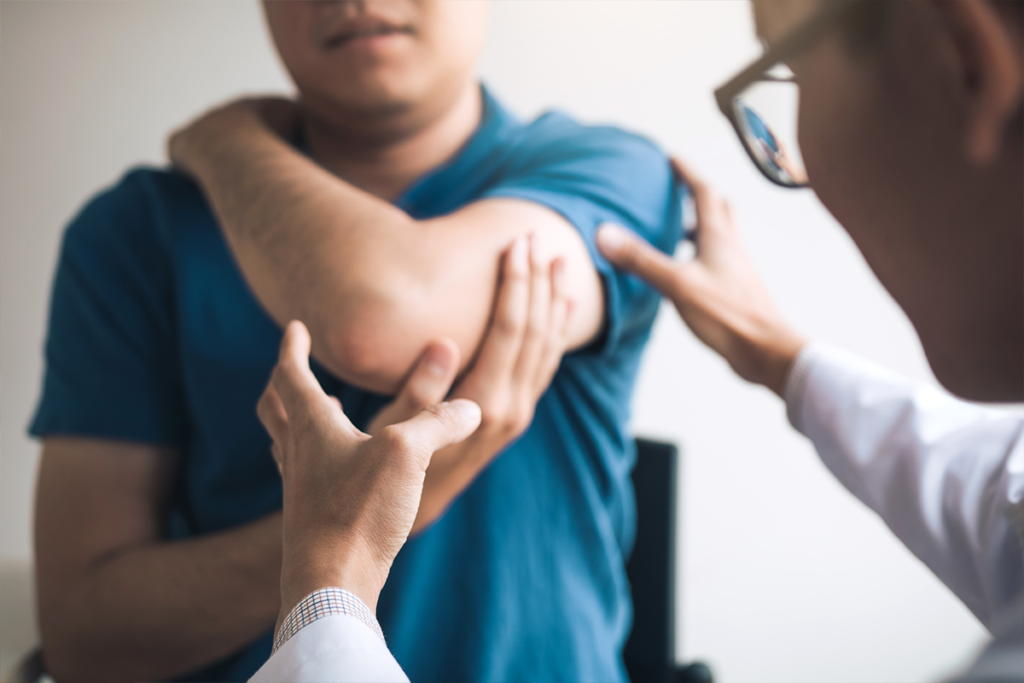By Melissa Volansky, MD, Lamoille Health Partners Family Medicine
Pain is … painful … on many levels. It can be anything from a slightly bothersome headache to a serious and scary feeling that takes over, such as the chest pain that might signal a heart attack. It can be uncomfortable in a physical sense as well as a psychological sense.
Many people, especially as they age, discover that they keep feeling ongoing, chronic pain. By definition, chronic pain is pain that lasts for more than three months, and it’s one of the leading reasons why adults go to the doctor.
What causes chronic pain?
Approximately 1 in 5 U.S. adults has some form of chronic pain, according to the U.S. Centers for Disease Control and Prevention. In addition, researchers estimated that chronic pain costs the U.S. up to $633 billion per year in medical expenses and lost productivity.
Chronic pain can happen for all sorts of reasons. It might come from health conditions like arthritis or diabetes. Some people with autoimmune disorders like lupus might experience pain. Past injuries also can create painful conditions that don’t fully heal. In some cases, there may not be a clear reason.
Many chronic pain sufferers are affected to the point where they can’t work, eat properly, take part in physical exercise, or enjoy certain activities. Chronic pain can lead to depression, anxiety, and sleep troubles, all of which can make the pain even worse.
If you’re experiencing pain that’s lasted more than three months without much relief, your Lamoille Health Partners providers can help. They will work with you to explore the possible cause of the pain and recommend ways to help you manage it.
How is chronic pain diagnosed?
Your caregiver will likely ask you a series of questions to help better understand your pain, such as where it is occurring, how intense and frequent the pain is, whether you’ve had any recent surgeries or illnesses, and what has helped the pain or made it worse in the past. He or she will also complete a physical exam if needed to look for the cause of the pain.
How is chronic pain treated?
In many cases, the focus of chronic-pain care shifts to managing the pain, likely through a combination of therapies and lifestyle changes.
Medication is often a treatment considered for pain relief, but with a great deal of caution. Your provider might suggest nonsteroidal anti-inflammatory drugs (NSAIDs) or acetaminophen, which are medicines such as Tylenol or Advil. Topical products, applied to the skin, may contain pain relievers or ingredients that create soothing heat or cold.
Some patients may ask about opioids, but these can be highly addictive. Your tolerance can quickly build up over time, which means the drugs don’t work as well the longer you use them. As a result, most doctors usually try other pain treatment options instead.
Your physician may also recommend certain therapies to help you manage your chronic pain, such as physical therapy or exercises. Research has shown that behavioral health counseling can help chronic pain, either as a stand-alone treatment or with medicine and exercise.
What else can I do to lessen chronic pain?
Outside of medication and pain management therapies, there are several simple steps you can take in terms of lifestyle changes that can help reduce pain and improve your overall health.
These include:
- Stay hydrated. Dehydration can exacerbate chronic muscle and joint pain, slow the rate of healing, and increase the chances of injury. Water helps hydrate parts of your spine and prevents your tendons, ligaments, and muscles from becoming tight and stiff.
- Get moving. Multiple studies have shown that exercise can reduce chronic pain. But, when you’re in pain, exercise often feels like the last thing that could possibly help. The key is to start slow, be sure to properly stretch before and after your workout, increase your intensity gradually and respect your body’s limits.
- Heat/Cold. Grab the heating pad and the ice pack. When you’re dealing with pain, the age-old question is, what will make it feel better – heat or ice? Experts at the Cleveland Clinic break down the best technique to use depending on the type of injury or pain. Bottom line: Heat works well on lingering injuries because it increases blood flow to help relax tight muscles and relieve aching joints. Ice is best after exercise or activities to prevent inflammation.
- One breath at a time. Multiple studies have shown that simply closing your eyes and focusing on your breathing for 10 minutes can do wonders to calm your nervous system and regulate your blood pressure, which may lead to reductions in pain and help you cope. Whether you refer to it as meditation, mindfulness or simply unplugging, taking time each day to pay attention to the present moment can make a big difference.
Remember your Lamoille Health Partners team is here to help you with all your health concerns. While some people might think it’s “just complaining” to talk about chronic pain, pain can only be treated when you talk with your doctor about the options that are right for you.

